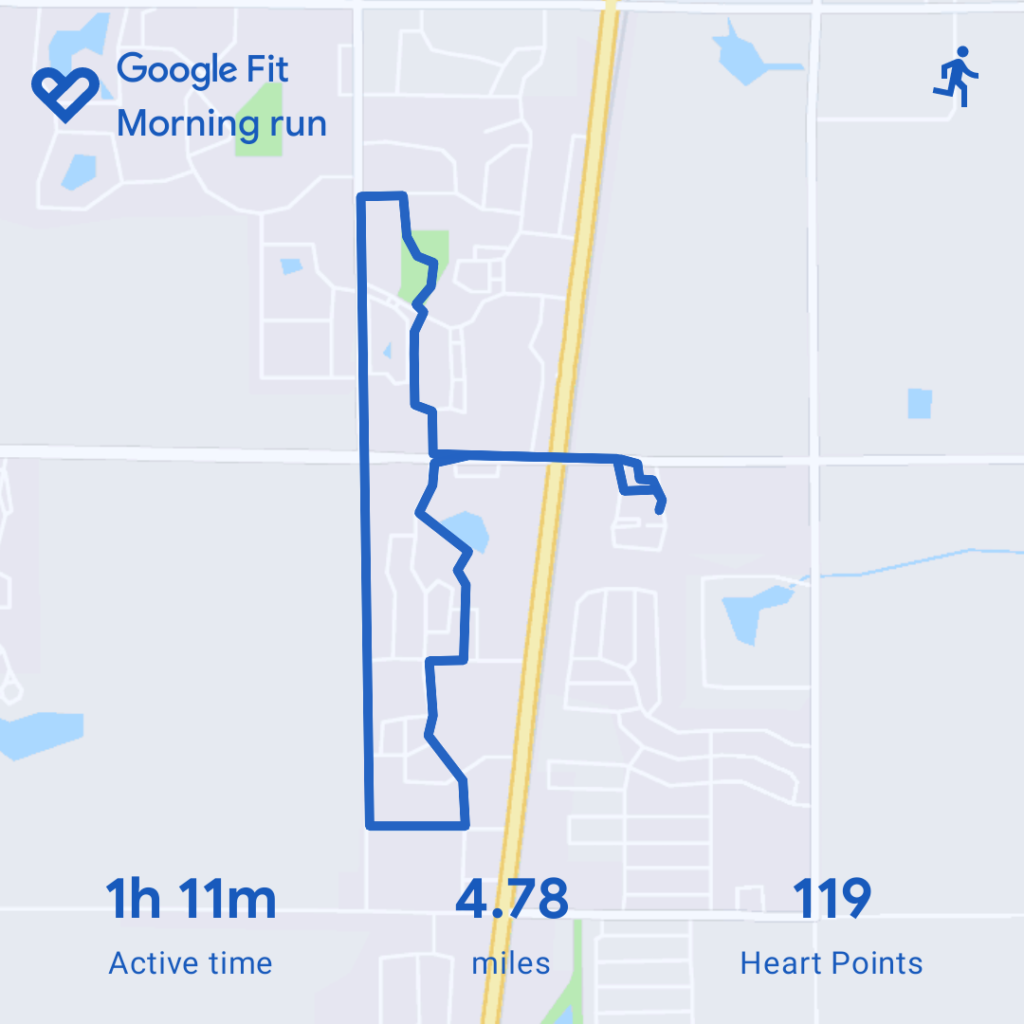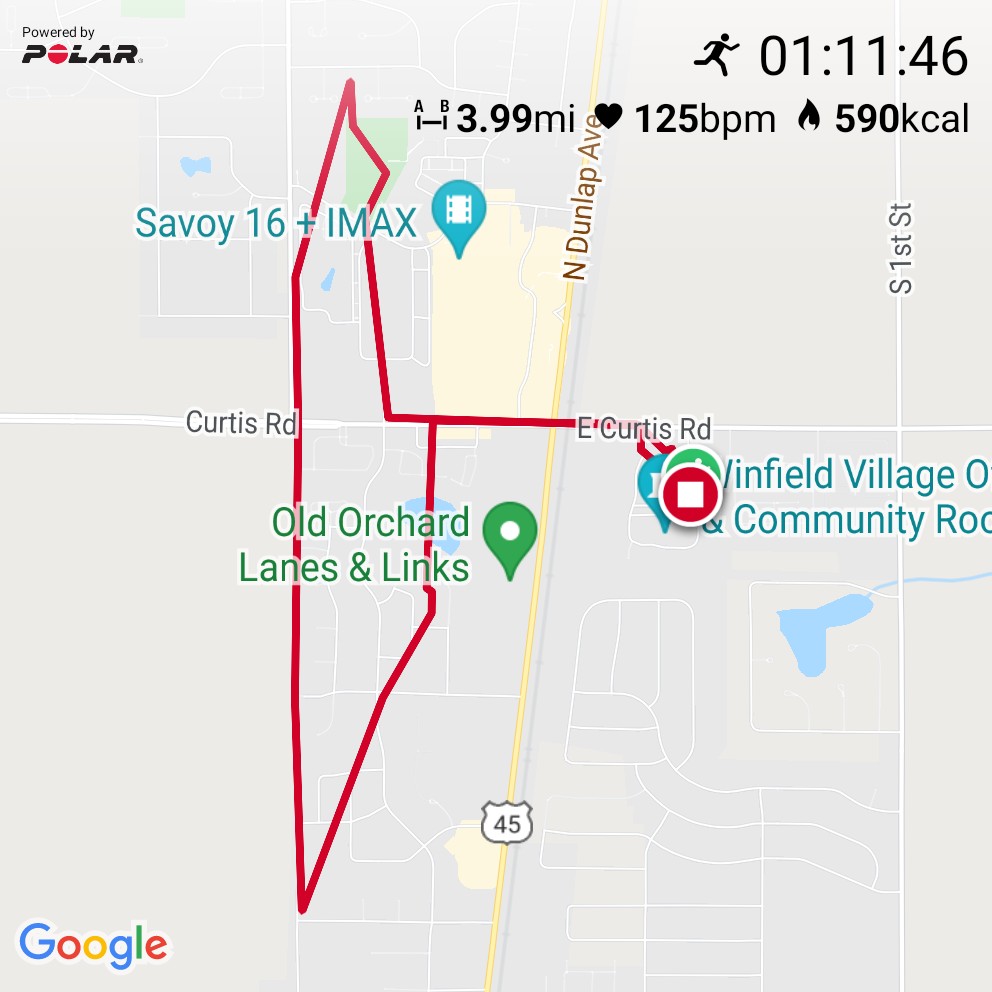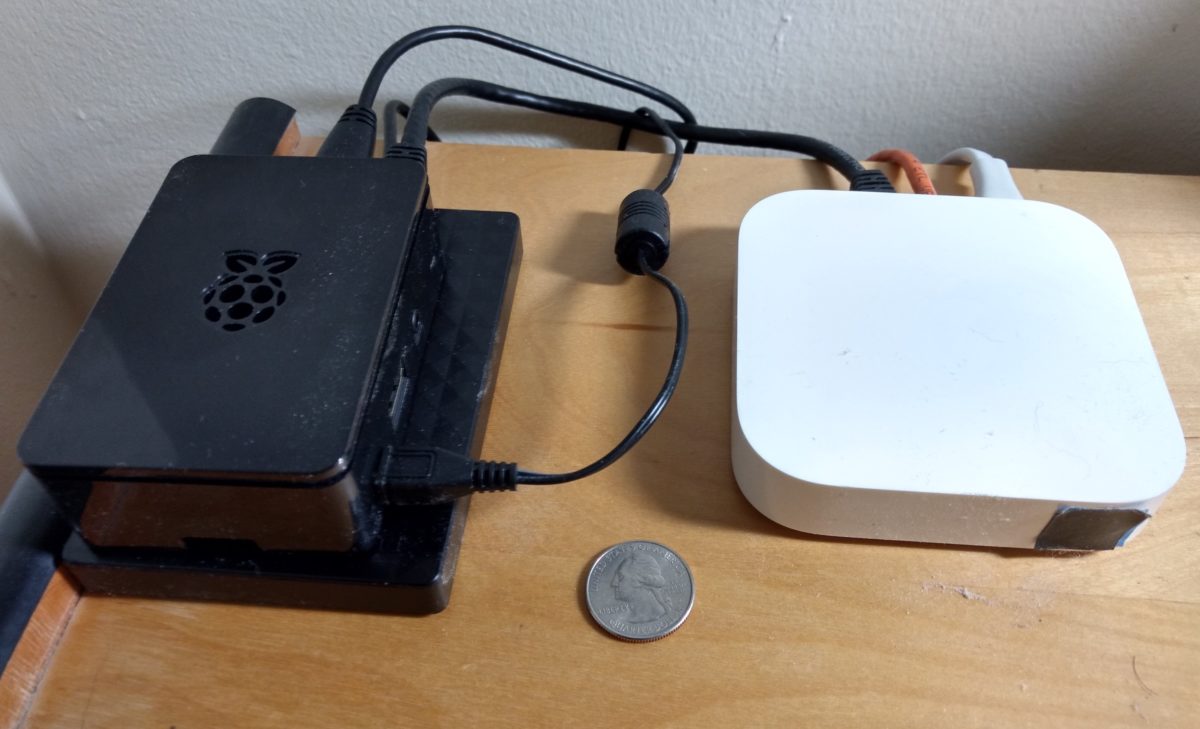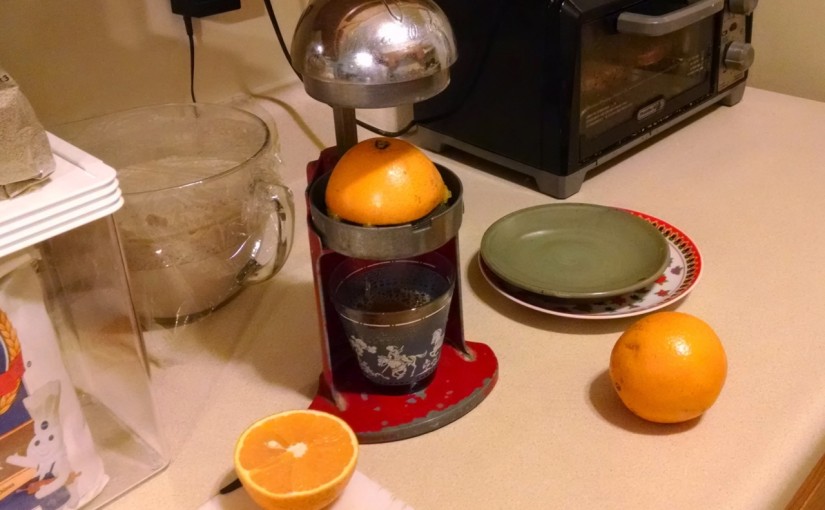Sometime in the summer of 2020 GPS 🏃🏻♂️ tracking in the Polar Flow app on my Android phone suddenly started producing crappy results.


Polar shortchanges me by nearly 20%!

Sometime in the summer of 2020 GPS 🏃🏻♂️ tracking in the Polar Flow app on my Android phone suddenly started producing crappy results.


Polar shortchanges me by nearly 20%!
Using the current book’s cover as lock screen on my Kindle doesn’t seem to be an option on my old, old kindle. Maybe just on new ones?
I’ve been an avid reader since I was a little kid, but very much not a tracker of things I read. In 6th grade I could have gotten some little prizes for reading a lot, if I’d been willing to go to the trouble of documenting the things I read, but I seriously could not be bothered to do so.
Very occasionally though, I miss having a record of things I’ve read, such as when somebody asks me, “Read any good books lately?”
I never signed up for Goodreads, and was glad I had not when they got bought. (Letting large corporations use my data to improve their bottom line bugs me on principle.) But just now I learned about IndieBookClub, which (like micro.blog) provides an interface for posting—in this case your reading activity—to your own website.
As a non-tracker from way back, I’m probably not likely to become a tracker just because there’s a new cool tool for tracking, but you never know.
Edited to add: I have posted my first book.

A year and a half ago, my brother gave me a Raspberry Pi 3 as a birthday present, suggesting that I should use it to run my own server.
I used to run my own server. A friend who liked to build such things had built it. It had two ethernet ports, one connected to my cable modem and the other connected to my WiFi router, and it was running OpenBSD (then the most secure OS easily available) and was configured to serve as a firewall.
I used it as a server in other ways. I put an extra disk drive (40 GB!) in it where I could store files that I might want to access from elsewhere. (In particular, when I went to Clarion I copied my latest draft of my current story there each evening, in case of catastrophic computer failure.)
It didn’t require much upkeep, but it required more than none—which turned out to be more than I wanted to devote to it. At some point a serious security flaw was discovered in the OpenBSD release I was running. By then most desktop machines had built-in firewalls as did most routers, and I had Time Machine as a backup solution. It seemed safe to give up my server, and easier than updating it.
In the years since then, the use of cloud services has become ubiquitous, to the point that practically everything I do ends up in the cloud—my photos go to both Flickr and Google. I also use Dropbox (where I have Scrivener stash a backup copy of everything I’m writing) and I stash some amount of my music at both Google and at Amazon.
That’s all great—those services are well backed-up, and the servers are very likely running the latest security patches—but I really like the idea of having my own data on my own machines. But I want that without giving up the advantages of having my data in the cloud. Hence wanting to have my own server.
All that as prequel to my brother coming to visit this past week, and helping me get my Raspberry Pi server up and running.
Once the basic install of Raspbian was up and running, I went ahead and ordered a bit of hardware for it. I got a short ethernet cable to connect it to my router, so that it doesn’t have to do WiFi for basic connectivity (although WiFi and Bluetooth are built in). I also got a slightly more powerful USB power supply for it, mainly because I also got a portable USB hard drive that takes its power from the USB port, meaning that the power needs to be available to the Raspberry Pi. Finally, I got a case for it, so that I don’t just have a naked circuit board sitting on my dresser.
This time the hard drive is 1 TB rather than 40 GB.
For cloud functionality I’m following my brother’s example and running syncthing, which has the advantage of being able to handle being behind a NAT and not having a port exposed to the outside world. I’m running it on my Android phone as well and sharing my photos with a third place: my server. The server then shares them with my desktop machine, so they’re available to use. (That’s how I got the photo above: Taken with the phone and then transferred to the desktop within about a minute.)
I’m still sorting out my sharing strategy. I don’t want to share my whole Music folder with my phone, because it would use all the space there. (I’ll probably end up making a folder with an “essential subset” of my music to share with the phone.) I don’t think I want to share my whole Documents folder on my desktop machine, but I’m not sure yet. For the time being I’m sharing a folder I call “Active writing” with the files I’m currently working on, on the desktop, the server, and my laptop. That way they’ll be available wherever I want to work on them.
Other things are tougher. I’d like to have my own calendar server, but that doesn’t seem easy. I should go back to my post on the google-free option and see what else I was thinking about that I might now be able to implement.
For now, though, I’m pretty happy.
My previous server was rack mount width and maybe four or five inches tall, about the size of a stereo component. This one is maybe 3 inches by 5 inches, rather smaller than the hard drive it’s sitting on.

Jackie and I spent the morning at Busey Woods, clearing bush honeysuckle.
As you can see, Jackie is very pleased with her saw.
That previous post was an attempt to “like” this post using IndieWeb Press This. I’d used the tool successfully earlier, but this time I didn’t see the “Liked:” prefix on the post (and I don’t see the “Reply:” prefix on this one).
An early morning drive to Hyannis (almost) and back. Just that Miss Me did not hop on the ferry and decided to head home with me. She was to volunteer at the Nantucket Yoga festival which she attended last year and had a real good time. Today morning she just didn’t ‘feel’ like being there […]Also on: Twitter
In which I mention Aaron Pareki’s Now page primarily as a test of WebMentions, and also a test of post titles with a word after the date (rather than before, the way I’d been doing it).
In part of my continuing preparation for using Manton Reece’s micro.blog stuff, I went ahead and installed the Webmentions plugin for WordPress on this site.
So, if you use Webmention (whether on a WordPress blog or some other kind of site), you should get notified when I link to your stuff, and I should get notified when you link to my stuff.
This will be so much better than having these discussions on some lame blend of blog comments, Facebook, and Twitter.
I’m moderately active on Twitter and Facebook. I post photos on both Flickr and Instagram. I try to keep my profile reasonably up to date on LinkedIn. I even use Google Plus. I hate all these things.
(Actually, I don’t hate Flickr—it’s pretty good.)
There are a lot of things I hate about them, beginning with big corporations deciding which ads appear next to my words (not to mention keeping the money from those ads). I also hate the way they keep making their services worse (the needs of the venture capitalists outweigh the needs of the users). But the worst thing is: I can’t find stuff I remember writing!
“Oh, yeah—I put that one on Facebook.”
“Oh, yeah—that one was a tweet.”
“Oh, maybe I wrote that back when I had my LiveJournal going?”
My partial solution, for a while now, has been to put almost everything—all but the shortest bits—on my own blog. Then I link back to them on Twitter and Facebook and Google Plus. That’s still unsatisfactory in several ways, but especially for those short bits—tweets and Facebook posts—that don’t get their own blog entries.
There’s no good solution. My blogging software supports “asides” or “status” posts which are supposed to be for things like Twitter or Facebook posts. I used those briefly, and didn’t like it. Those little posts cluttered up the main flow of my blog. Worse, different blog themes displayed them differently. (Maybe I’ll try posting an “aside” or a “status” again after this post, and see if they’re better now.)
I even considered setting up a Diaspora node for a while, and then arranging to have things I posted there flow out to Twitter, Facebook, and Google Plus. Then at least everything I posted would be just one of two places (my website and my Diaspora node). That turned out to be too much work.
Just yesterday I ran across something that may go some way toward solving this problem: Indie Microblogging: owning your short-form writing, which I have backed on Kickstarter (video below).
I don’t yet know if it will solve my problems, but I’ll try it out and see if it works.
One key feature of the Indie Microblogging thing that makes me think it might be satisfactory is that it’s built on RSS. (The fact that it provides RSS feeds is the reason I don’t hate Flickr, and the fact that they don’t is a big piece of what’s wrong with Twitter, Facebook, and the rest.)
Anyway, check out Indie Microblogging, and see if it’s something of interest to you, too:
https://www.kickstarter.com/projects/manton/indie-microblogging-owning-your-short-form-writing/

Last spring, while helping my Dad clear out our old house, we came upon the old family orange juice squeezer. I asked if I could have it, and managed (I think on my next trip) to get it home. (It’s a huge, heavy, steel contraption, from the days when things were made to last.)
Some of my very earliest memories, from before I was four years old, are of my mom using this squeezer to make my dad orange juice. They switched over to frozen concentrated orange juice when I was about that age, and I don’t think the squeezer got much use after that.
We packed up the squeezer when we packed to move, so it was unavailable all last summer. I think we used it once last fall as soon as we got it unpacked, but juice oranges are expensive compared to frozen concentrate, so we just did one bag of oranges and then put it away. This spring, though, I’ve been watching to see if juice oranges ever go on sale, which they don’t seem to do.
So, despairing of oranges on sale, I started just checking the bags themselves, and decided a couple of days ago that they looked particularly good—small, but heavy for their size—and got a bag.
The earlier times we’ve used the squeezer, it suffered from the oranges being too big. I’d figured it was just a matter of fashions in agribusiness—the squeezer is sized for the oranges in general commerce in the 1950s—but perhaps it’s also a seasonal thing. At any rate, the oranges in this bag are exactly the right size—the squeezer gets all the juice out in one go. (The bigger ones I had to squeeze, and then shift and then squeeze again.)
These oranges are also extra juicy. Before I was squeezing three or four oranges to get juice for two people, but just one orange apiece is enough with these oranges!
And, oh fresh juice is good! So much better than frozen concentrated. Better even than the “premium” not-from-concentrate juice you can buy these days in the grocery store.
If this is a seasonal thing, and not just a fluke, I’m going to be very tempted to keep getting fresh oranges all season.